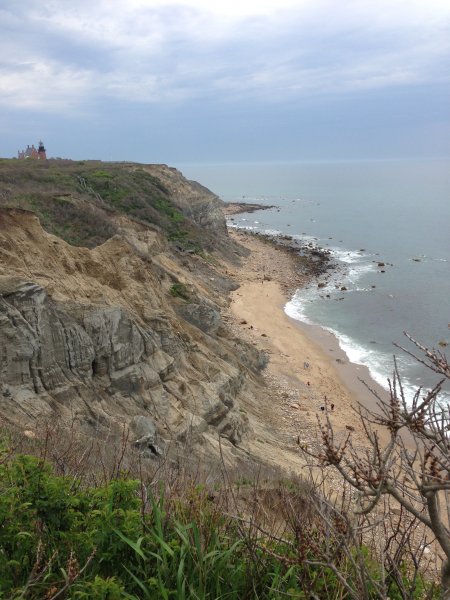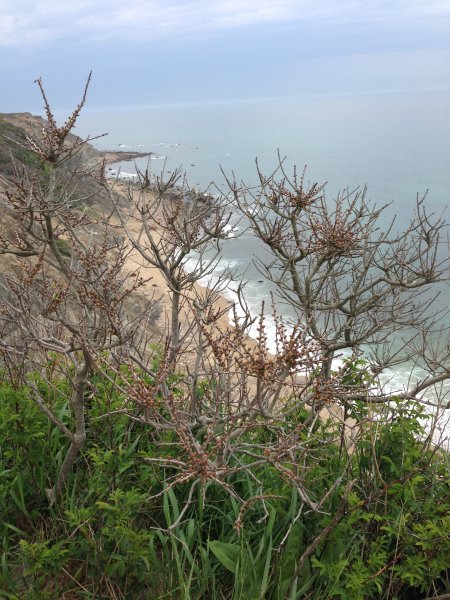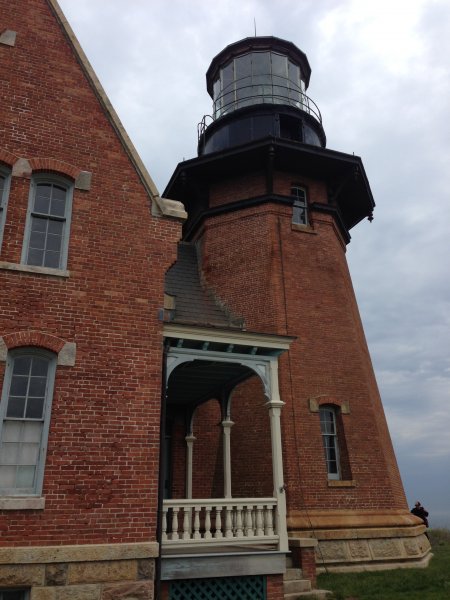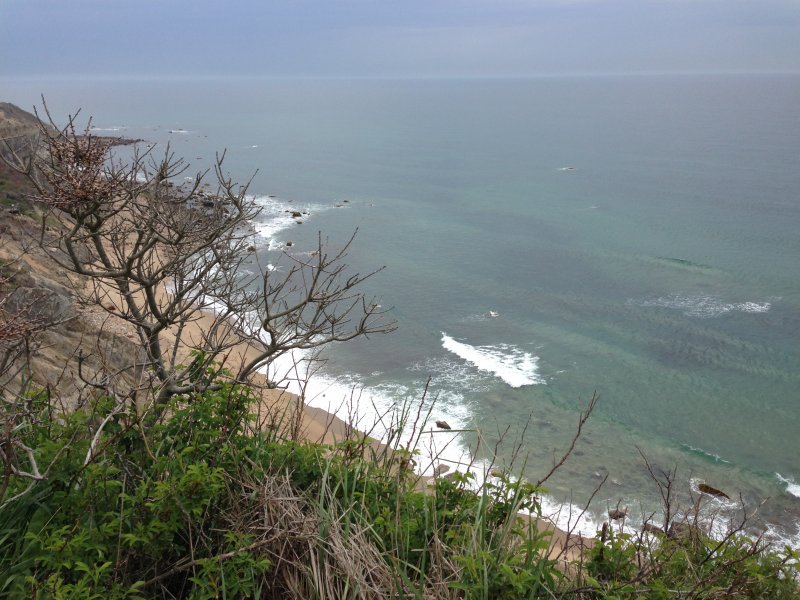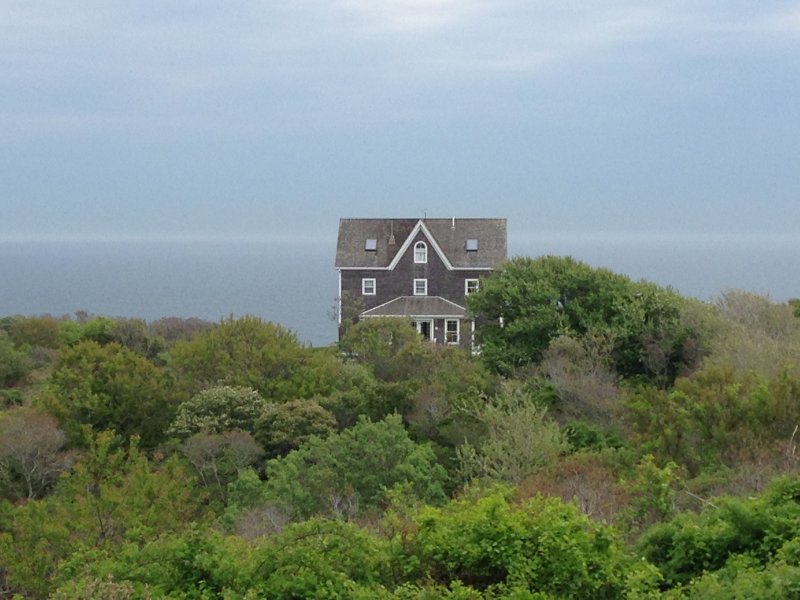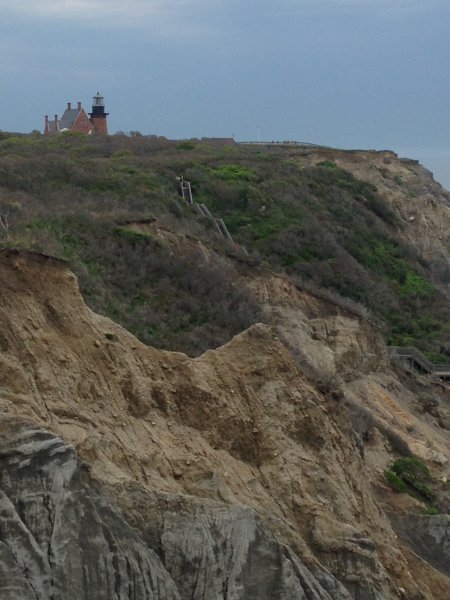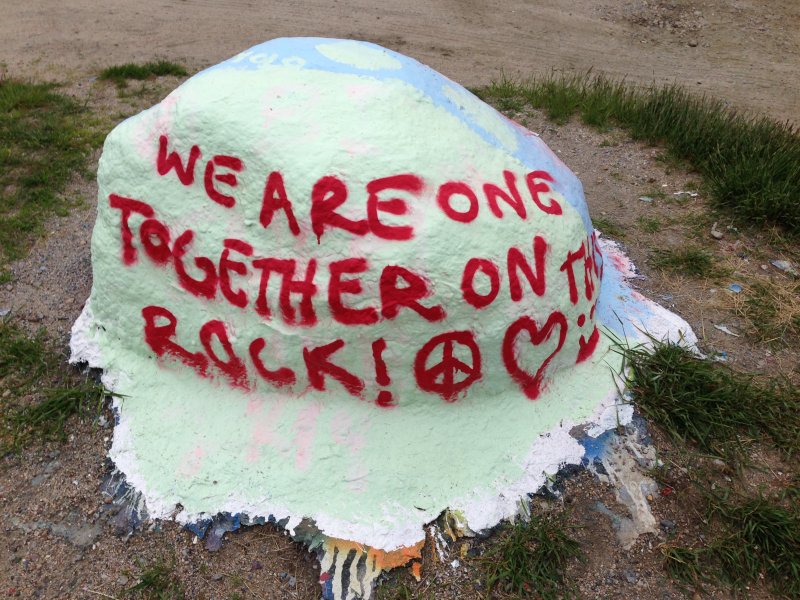Memorial Day weekend calls for the beach. No matter that the ferry crossing to Block Island was cold and the indoor seats smelled of mildew. No matter that the sun couldn’t find its way. There’s nowhere quite as sweet on a late spring day as the seashore.
Lighthouses and painted rocks and bluffs and sand and surf and cat tails and shades of gray and green. Junk shops and galleries and fried seafood and ice cream.
Check out the slide show below.
And then, there’s the alpacas. Wait! What?
Yes, these alpacas are part of the North Light ( named after the lighthouse) Fiber production process. From animal to textile, they do all the steps here. I bought several skeins of alpaca for my new rigid heddle loom. Wish me luck!

I took an island taxi tour with Barry, who showed me his house and their Norwegian Fjord horses Orion and Jenny. These are stocky work horses, living a pretty good life on BIRI, or Block Island, RI to you land lubbers.

Barry lives on the west side of the island, the most isolated part of this isolated place. Historically, roads on the 10 square mile island were so bad, the west siders had their own school. Prejudice ran high. West siders were considered “short, ugly, and inbred.” Now, their houses circle $1 million.
The island is still covered by 300 miles of stone walls, used to separate fields of mostly  corn and potatoes. But today, no longer part of a farm culture, the fields and hedgerow are mostly overgrown. The Conservancy maintains this pasture to show what the island looked like since its European settlement in 1661.
corn and potatoes. But today, no longer part of a farm culture, the fields and hedgerow are mostly overgrown. The Conservancy maintains this pasture to show what the island looked like since its European settlement in 1661.
An environmental theme also organizes my friend Suzan Shutan’s new show at the elegant Five Points Gallerie in Torrington, CT.

I always love Suzan’s Pom Pom pieces, here documenting Connecticut’s well water in “Mapping Ground Water.” The Pom poms are scaled to indicate the prevalence of wells, larger means more.

Most spectacular is “Flow: Tarpaper Seepage,” one of a series Suzan has made from tar roofing and handmade paper. It roller coasters through the gallery space, perhaps slightly visible through my inadequate pictures. It belongs in a museum, so let’s help Suzan make it happen!



